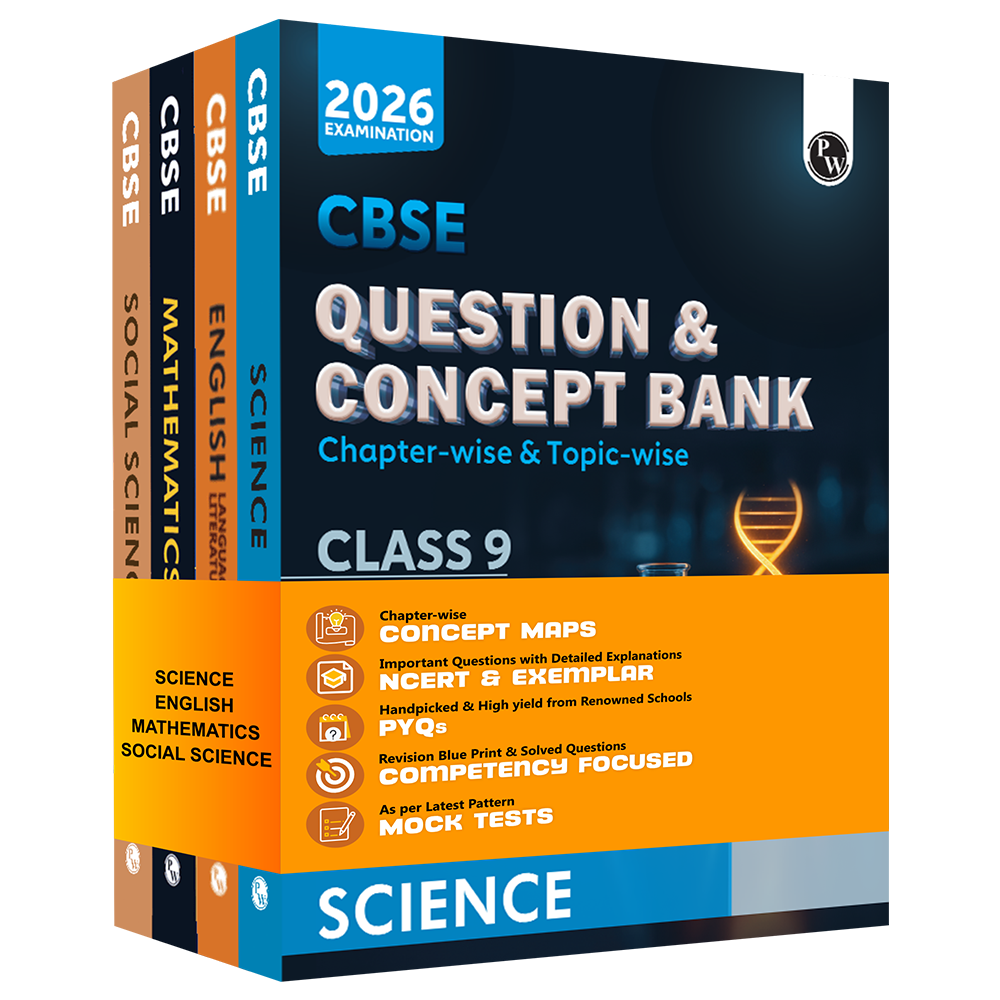NCERT Solutions Class 9 Science Chapter 1 Matter in Our Surroundings

Class 9 Science Chapter 1 Matter in Our Surroundings:- NCERT Solutions for Class 9 Science (Chemistry) Chapter 1, Matter in Our Surroundings, are crucial study materials for your CBSE Class 9 Science exam. These comprehensive solutions offer a clear understanding of the fundamental concepts covered in this chapter. Check out the Class 9 Science Chapter 1 Matter in Our Surroundings NCERT solutions below.
Check out: Class 9th Books
NCERT Solutions Class 9 Science Chapter 1 Matter in Our Surroundings
Exercise-1.1-1.2 Page: 3
1. Which of the following matter?
Chair, air, love, smell, hate, almonds, thought, cold, lemon water, the smell of perfume.
Solutions: The substances listed below are examples of matter: Chair, Air, Almonds, Lemon water, and the scent of perfume.
2. Give reasons for the following observation:
The smell of hot sizzling food reaches you several meters away, but to get the smell from cold food, you have to go close.
Solution: Hot sizzling food releases particles with high kinetic energy, enabling them to travel several meters in the air and reach you. In contrast, cold food releases particles with lower energy, necessitating closer proximity to perceive its smell.
3. A diver is able to cut through water in a swimming pool. Which property of matter does this observation show?
Solution: The diver effortlessly cuts through the water in the pool due to the weak attraction between water molecules, which facilitates smooth diving.
4. What are the characteristics of the particles of matter?
Solution: The characteristics of particles of matter include:
(a) Presence of intermolecular spaces
(b) Constant motion of particles
(c) Mutual attraction between particles
(d) All matter is composed of independent, very small particles.
Exercise-1.3 Page: 6
1. The mass per unit volume of a substance is called density. (density=mass/volume). Arrange the following in the order of increasing density – air, exhaust from the chimneys, honey, water, chalk, cotton and iron.
Solution: The following substances are arranged in increasing density:
-
Air
-
Chalk
-
Exhaust from chimney
-
Cotton
-
Water
-
Honey
-
Iron
2. Answer the following.
a) Tabulate the differences in the characteristics of matter.
b) Comment upon the following: rigidity, compressibility, fluidity, filling a gas container, shape, kinetic energy and density.
Solution:
|
Characteristics |
Solid |
Liquid |
Gas |
|
Shape |
Fixed shape |
No Fixed shape |
No Fixed shape |
|
Volume |
Fixed volume |
Fixed volume |
No Fixed volume |
|
Intermolecular force |
Maximum |
Less than solids |
Very less |
|
Intermolecular space |
Very less |
More than solids |
maximum |
|
Rigidity/Fluidity |
Rigid/cannot flow |
Can flow/not rigid |
Can flow/not rigid |
|
Compressibility |
negligible |
compressible |
Highly compressible |
(a) Differences in the characteristics of the three states of matter:
-
Solids maintain their shape under external force.
-
Liquids can flow and take the shape of their container.
-
Gases expand to fill their container completely.
(b) Properties of matter:
(i) Rigidity: Matter retains its shape under external force.
(ii) Compressibility: Particles decrease their intermolecular space under external force, increasing density.
(iii) Fluidity: Substances can flow freely.
(iv) Conformity to the container: Particles in a container take its shape.
(v) Shape: The defined structure of an object within boundaries.
(vi) Kinetic energy: Particles' motion gives them kinetic energy, varying as Solids < Liquids < Gases.
(vii) Density: Mass per unit volume expressed as d = M/V, where ‘d’ is density, ‘M’ is mass, and ‘V’ is volume.
Check out: Class 9th Combo Set of 5 Books
3. Give reasons
a) A gas fills completely the vessel in which it is kept.
b) A gas exerts pressure on the walls of the container.
c) A wooden table should be called a solid.
d) We can easily move our hand in the air, but to do the same through a solid block of wood, we need a karate expert.
Solution: (a) Gas particles exhibit weak intermolecular attraction, allowing them to freely move within a container.
(b) Gaseous particles, with their weakest intermolecular forces, move randomly. When they collide with the container walls, they exert pressure.
(c) Hardwood tables have a defined shape and volume due to tightly packed wood particles that maintain their structure and do not conform to the container's shape.
(d) Air particles are widely spaced with loose boundaries, allowing free movement of hands. In contrast, solid particles are tightly bound together, often with little space between them, requiring considerable force to break apart, akin to a karate expert.
4. Liquids generally have a lower density than solids. But you must have observed that ice floats on water. Find out why.
Solution: Generally, liquids have a greater volume than solids because their particles can move more freely. However, ice, with its maximum density at 4 degrees Celsius, is less dense than liquid water, causing it to float on water.
Exercise – 1.4 Page: 9
1. Convert the following temperature to Celsius scale:
a. 300K b. 573K
Solution:
a. 0°C=273K
300K= (300-273)°C = 27°C
b. 573K= (573-273)°C = 300°C
2. What is the physical state of water at:
a. 250°C b. 100°C ?
Solution:
(a) At 250°C, water exists in the gaseous state, having surpassed its boiling point.
(b) At 100°C, water is at its boiling point and exists in both liquid and gaseous states simultaneously.
3. For any substance, why does the temperature remain constant during the change of state?
Solution: The temperature remains constant during a change of state because the supplied heat is used to alter the substance's state rather than increase its temperature, a process known as latent heat.
4. Suggest a method to liquify atmospheric gases.
Solution: This can be achieved by increasing pressure or decreasing temperature, which reduces the spaces between molecules.
Check out: School Books
Exercise – 1.5 Page:10
1. Why does a desert cooler cool better on a hot dry day?
Solution: This occurs because hot, dry conditions with higher temperatures and lower humidity facilitate faster evaporation. Increased evaporation enhances the cooling effect significantly.
2. How does the water kept in an earthen pot (matka) become cool during summer?
Solution: An earthen pot is porous, allowing water to penetrate and evaporate through its tiny pores. Evaporation requires energy, which is absorbed from the water inside the pot, causing the remaining water to cool down.
3.Why does our palm feel cold when we put on some acetone or petrol, or perfume on it?
Solution: Acetone, petrol, and perfume are volatile substances that evaporate upon contact with air. This evaporation process absorbs energy from the surroundings, including the palm, resulting in a cooling effect on our skin.
4. Why are we able to sip hot tea or milk faster from a saucer rather than a cup?
Solution: A saucer offers a larger surface area than a cup, allowing for faster evaporation. This rapid evaporation cools down the tea or milk more quickly in the saucer.
5. What type of clothes should we wear in summer?
Solution: During summer, it is advisable to wear light-coloured cotton clothes. Light colours reflect heat, while cotton absorbs sweat through its pores, promoting evaporation and thus cooling the skin
Chapter Exercise – Page: 12
1. Convert the following temperature to Celsius scale.
(a) 293K (b) 470K
Solution:
0°C=273K
(a) 293K= (293 – 273)°C = 20°C
(b) 470K= (470 – 273)°C = 197°C
2. Convert the following temperatures to the Kelvin scale.
(a) 25°C (b) 373°C
Solution:
0°C = 273K
(a) 25°C = (25+273)K = 298K
(b) 373°C = (373+273)K = 646K
3. Give reason for the following observations:
(a) Naphthalene balls disappear with time without leaving any solid.
(b) We can get the smell of perfume while sitting several metres away.
Solution: (a) Naphthalene balls undergo sublimation at room temperature, transitioning directly from solid to gas without melting into liquid first.
(b) Perfumes contain volatile substances that quickly disperse in the air due to high molecular speed and large intermolecular spaces. This dispersion causes the scent to be detectable from several meters away.
4. Arrange the following in increasing order of forces of attraction between the particles – water, sugar, oxygen.
Solution: Oxygen (gas) < water (liquid) < sugar (solid)
5. What is the physical state of water at –
(a) 25°C (b) 0°C (c) 100°C?
Solution:
(a)Water remains in its liquid form at 25°C, which is typical for room temperature.
(b) At 0°C, water reaches its freezing point, coexisting as both solid ice and liquid water.
(c) At 100°C, water reaches its boiling point, existing simultaneously as liquid water and water vapor (gaseous state).
6. Give two reasons to justify –
(a) Water at room temperature is a liquid.
(b) An iron almirah is a solid at room temperature.
Solution: (a) Water remains a liquid at room temperature because its melting point is below room temperature and its boiling point is above (100°C).
(i) Water occupies a fixed volume for a given mass.
(ii) Water takes the shape of its container at room temperature.
Therefore, water is a liquid at room temperature.
(b)An iron almirah is solid at room temperature because its melting and boiling points are above room temperature.
(i) Iron almirahs are rigid and maintain a fixed shape.
(ii) Metals, including iron, have a relatively high density.
Thus, at room temperature, an iron almirah remains solid.
7. Why is ice at 273K more effective in cooling than water at the same temperature?
Solution: At 273 K, ice absorbs latent heat from its surroundings to melt into water. This process results in ice having a stronger cooling effect compared to water at the same temperature, as water does not absorb additional heat from its surroundings.
8. What produces more severe burns, boiling water or steam?
Solution: Steam causes severe burns due to its exothermic release of heat absorbed during vaporization.
9. Name A, B, C, D, E and F in the following diagram showing a change in its state.
Solution: Interconversion of the three states of matter can be achieved using temperature or pressure:
(A) Solid to Liquid → Melting (fusion or liquefaction)
(B) Liquid to Gas → Evaporation (vaporization)
(C) Gas to Liquid → Condensation
(D) Liquid to Solid → Freezing (solidification)
(E) Solid to Gas → Sublimation
(F) Gas to Solid → Deposition
Check Out - CBSE Class 9 Question Bank
Class 9 Science Chapter 1 Matter in Our SurroundingsFAQs
Q1. What are the three states of matter?
Ans. The three states of matter are solid, liquid, and gas. These states differ in terms of their shape, volume, and compressibility.
Q2. How does matter change from one state to another?
Ans. Matter changes from one state to another through processes such as melting (solid to liquid), freezing (liquid to solid), evaporation or vaporization (liquid to gas), condensation (gas to liquid), sublimation (solid to gas), and deposition (gas to solid).
Q3. What factors affect the process of evaporation?
Ans. Factors affecting evaporation include temperature (higher temperatures increase evaporation rate), surface area (larger surface area increases evaporation), humidity (lower humidity increases evaporation), and air movement.










